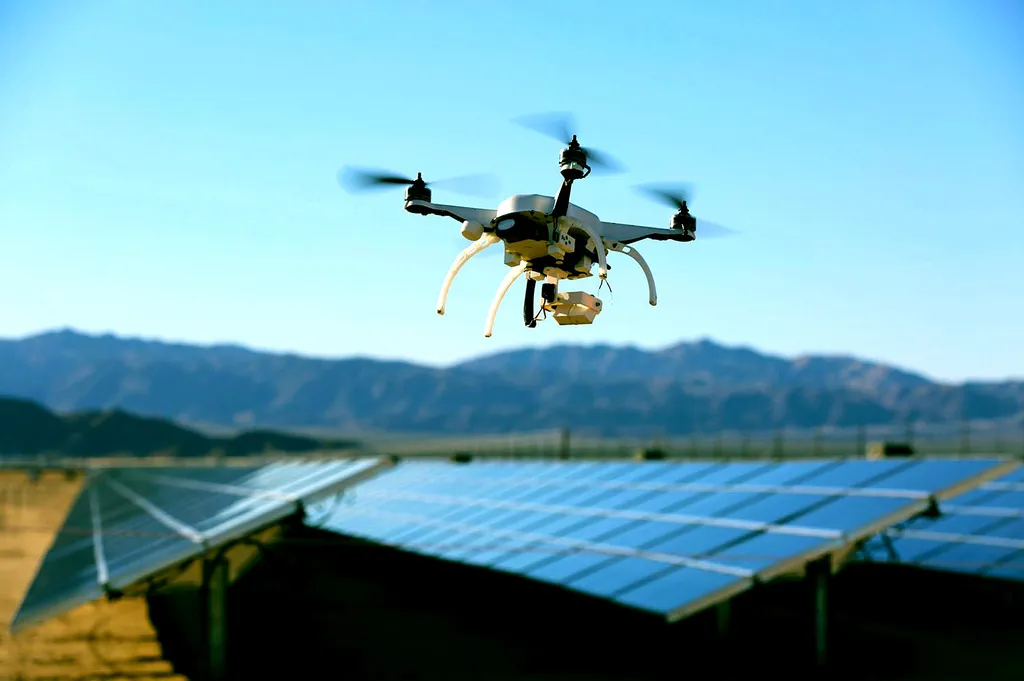In the sun-drenched fields of solar energy, precision is paramount. A novel drone-based measurement method, developed by Andreas Kämpgen of CSP Services España, is set to revolutionize the quality control process for parabolic trough collectors, a key technology in concentrated solar power (CSP) plants. This innovative approach, presented at the Solar Power and Chemical Energy Systems (SolarPACES) Conference, promises to enhance efficiency and accuracy in solar field construction, commissioning, and operation.
Parabolic trough collectors, which concentrate sunlight onto a receiver tube, require precise alignment to maximize energy capture. Traditionally, this alignment has been checked using hook-rod measurements for the receiver and total-station measurements for the module. These methods, while effective, can be time-consuming and labor-intensive. Kämpgen’s drone-based method, however, offers a faster, fully automated alternative.
The method involves using commercially available drones equipped with a visual camera and real-time kinematic (RTK) positioning. The drone captures images of the collector’s aperture edges and the absorber tube line, which are then analyzed using robust edge detection algorithms. This process allows for seamless measurement along the entire collector, providing high-resolution and accurate alignment data.
“The measurement method replaces hook-rod based measurements of the receiver alignment and total-station based measurements of the module alignment in a fast and fully automated way,” Kämpgen explained. This automation not only speeds up the process but also reduces the potential for human error, leading to improved overall quality control.
The versatility of this method is another significant advantage. It can be applied in all project phases, from construction to operation, and can measure receivers with or without protective foil, regardless of the collector’s orientation. This flexibility makes it a valuable tool for ensuring the optimal performance of parabolic trough collectors throughout their lifecycle.
The potential commercial impacts of this research are substantial. By streamlining the quality control process, solar energy companies can reduce operational costs and improve the efficiency of their CSP plants. This, in turn, can contribute to the broader adoption of solar energy, helping to meet the growing global demand for clean, renewable power.
The research also opens up new avenues for future developments in the field. As Kämpgen noted, “Due to its speed and versatility to measure receivers with and without protective foil and with the collector in arbitrary orientation, the measurement method can be applied in all project phases ranging from solar field construction over commissioning to operation.” This versatility suggests that the method could be adapted for use with other types of solar concentrators, further expanding its potential applications.
In conclusion, Kämpgen’s drone-based measurement method represents a significant step forward in the field of solar energy. By enhancing the quality control process for parabolic trough collectors, it has the potential to improve the efficiency and cost-effectiveness of CSP plants, contributing to the ongoing transition towards a more sustainable energy future. The research was published in the SolarPACES Conference Proceedings, a key resource for professionals in the solar energy sector.

